Socialist-leaning countries

In the political terminology of the former Soviet Union, the socialist-leaning countries (Russian: Страны социалистической ориентации, countries of socialist orientation) were the post-colonial Third World countries which the Soviet Union recognized as adhering to the ideas of Socialism in the Marxist understanding. As a result, these countries received significant economic and military support.[1] In Soviet press these states vare also called Russian: страны, идущие по пути строительства социализма, literally, "countries on the path of the construction of Socialism") Russian: страны, стоящие на пути социалиcческого развития, literally, "countries on the path of the socialist" development). All these terms meant to draw a distinction from the true Socialist states (in Marxist understanding)[2]
At various times, these states included Algeria, Angola, Mozambique, Egypt, India, Libya, Ethiopia, South Yemen, and many others.[1][2] As a major embarrassment to the Soviets, Jean-Bédel Bokassa turned emperor-cannibal at one time declared his adherence to "scientific socialsm"[3] in order to secure the free Soviet economic assistance.
In Soviet political science, "socialist orientation" was defined to be an initial period of the development in countries which rejected capitalism, but didn't yet have the prerequisites for the Socialist revolution or development. Along these lines, a more cautious synonym was used, "countries on the path of non-capitalist development". A 1986 Soviet reference book on Africa claimed that about 1/3 African states followed this path.[2]
List of Socialist-leaning states
Some of these countries had communist governments, while others (italicized) did not.
-
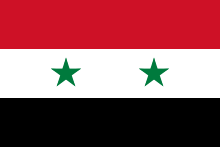 Egypt (1954–1973)
Egypt (1954–1973) -
 Syria (1955–1991)
Syria (1955–1991) -
.svg.png)
%3B_Flag_of_Syria_(1963-1972).svg.png) Iraq (1958–1963, 1968-1991)
Iraq (1958–1963, 1968-1991) -
 Guinea (1960–1978)
Guinea (1960–1978) -
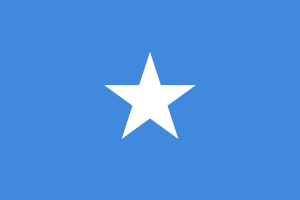 Somali Democratic Republic (1969–1977); in 1977, at the outbreak of the Somali invasion in Ethiopia, the Soviet Union ceased to support Somalia, with the corresponding change in rhetoric; Somalia broke diplomatic relations with the USSR, and the United States adopted Somalia as a Cold War ally.[4]
Somali Democratic Republic (1969–1977); in 1977, at the outbreak of the Somali invasion in Ethiopia, the Soviet Union ceased to support Somalia, with the corresponding change in rhetoric; Somalia broke diplomatic relations with the USSR, and the United States adopted Somalia as a Cold War ally.[4] -
.svg.png) Ghana (1964–1966)
Ghana (1964–1966) -
 Peru (1968–1975)
Peru (1968–1975) -
 Sudan (1968–1972)
Sudan (1968–1972) -
.svg.png) Libya (1969–1991)
Libya (1969–1991) -
 People's Republic of the Congo (1969–1991)
People's Republic of the Congo (1969–1991) -
 Chile (1970–1973)
Chile (1970–1973) -
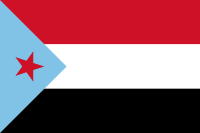 People's Democratic Republic of Yemen (1969–1990)
People's Democratic Republic of Yemen (1969–1990) -
 Uganda (1966–1971)
Uganda (1966–1971) -
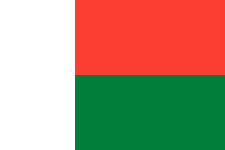 Madagascar (1972-1991)
Madagascar (1972-1991) -
.svg.png) People's Democratic Republic of Ethiopia (1974–1991)
People's Democratic Republic of Ethiopia (1974–1991) -
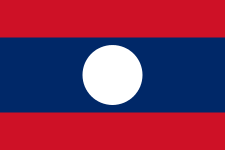 Lao People's Democratic Republic (1975–1991)
Lao People's Democratic Republic (1975–1991) -
.svg.png) Benin People's Republic of Benin (1975–1979)
Benin People's Republic of Benin (1975–1979) -
.svg.png) People's Republic of Mozambique (1975–1990)
People's Republic of Mozambique (1975–1990) -
 People's Republic of Angola (1977–1991)
People's Republic of Angola (1977–1991) -
.svg.png) Democratic Republic of Afghanistan (1978–1991)
Democratic Republic of Afghanistan (1978–1991) -
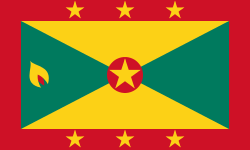 Grenada (1979-1983)
Grenada (1979-1983) -
 Nicaragua (1979–1990)
Nicaragua (1979–1990) -
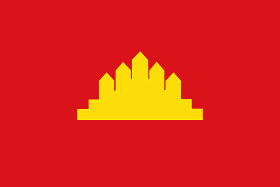 People's Republic of Kampuchea (1979–1989)
People's Republic of Kampuchea (1979–1989) -
 Indonesia (1950-1964)
Indonesia (1950-1964)
See also
- Soviet Bloc
- Soviet Empire
References
- ↑ 1.0 1.1 Dmitri Trenin, “Post-Imperium: A Eurasian Story,” Carnegie Endowment for International Peace, 2011. p. 144
- ↑ 2.0 2.1 2.2 "ОЦИАЛИСТИЧЕСКАЯ ОРИЕНТАЦИЯ", An article from the 1986-1987 Soviet reference book "Африка. Энциклопедический справочник"
- ↑ Black History Month 2012: Emperor Bokassa’s Coronation
- ↑ Crockatt, Richard, The Fifty Years War: The United States and the Soviet Union in World Politics. London & New York, NY: Routledge. 1995, ISBN 978-0-415-10471-5